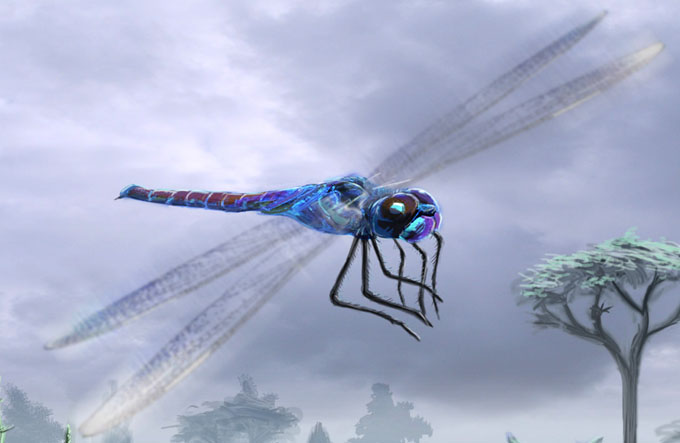
| Palaeos |  |
Pterygota |
| Arthropoda | Overview |
|
Abbreviated Dendrogram
INSECTA | `--PTERYGOTA |--Rhyniognatha `--+--Palaeodictyopteroida |--Ephemeroptera |--Odonatoptera `--NEOPTERA |
Contents
|
 The gigantic proto-dragonfly Meganeura, from the Latest Carboniferous (Stephanian - Gzhelian age) of France. Wingspan 70 cm. Image courtesy Muséum de Toulouse - Meganeura, Creative Commons Attribution Non-Commercial Non-derivative. |
At some point during the mid Carboniferous, insects evolved wings, even though the evolutionary line of winged insects derives from a tiny wingless Devonian ancestor. In a geological instant, the Carboniferous terrestrial ecology was transformed, and the world would never be the same again. So successful was this adaptation that the Pterygota (winged insects) are the most abundant and diverse of all the hexapod clades. During the Paleozoic, most insects belonged to the paleopteran or ancient-winged grade, but by the start of the Mesozoic, the Neoptera or "new wings" had become predimonant. In this unit however we focus on the Paleoptera MAK120517
| Page Back: Insecta | Unit Home | Page Top | Page Next: Pterygota |
page MAK120516; Creative Commons Attribution;